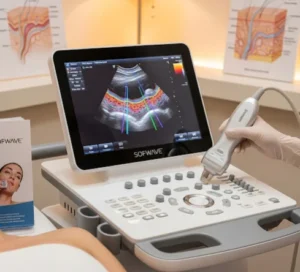Overview
Carpal tunnel release is a surgical procedure performed to relieve pressure on the median nerve in the wrist, which is compressed in carpal tunnel syndrome (CTS). This condition causes pain, numbness, tingling, and weakness in the hand and fingers, impacting daily activities.
In South Korea, carpal tunnel release surgery is performed using minimally invasive techniques by highly skilled orthopedic and hand surgeons. Advanced surgical methods ensure short recovery time, minimal scarring, and effective symptom relief, making South Korea a leading destination for hand and wrist surgeries.
What is Carpal Tunnel Release?
Carpal tunnel release involves cutting the transverse carpal ligament to enlarge the carpal tunnel and reduce pressure on the median nerve.
Types of carpal tunnel release surgery include:
- Open carpal tunnel release: Traditional method using a small incision in the palm.
- Endoscopic carpal tunnel release: Minimally invasive, using a tiny camera and instruments for a smaller incision and faster recovery.
The choice of technique depends on the severity of symptoms, anatomy of the wrist, and surgeon expertise.
What are the Benefits?
Carpal tunnel release surgery provides both functional and quality-of-life benefits:
✔ Relief from numbness, tingling, and pain in the hand and fingers.
✔ Improved grip strength and hand function.
✔ Minimally invasive options for faster recovery and less scarring.
✔ Reduced risk of permanent nerve damage if performed timely.
✔ High success rates in South Korea due to advanced surgical tools and expert surgeons.
Procedure Details
1) How should I prepare for Carpal Tunnel Release?
- Medical evaluation: Blood tests and hand/wrist imaging may be performed.
- Medication review: Stop blood thinners or other medications as advised.
- Fasting: Usually not required for local anesthesia; required if general anesthesia is planned.
- Hand preparation: Keep the hand clean and avoid applying lotions or creams.
- Arrange post-surgery support, as some daily activities may be limited initially.
Korean hospitals provide preoperative consultation and personalized guidance for both local and international patients.
2) What happens during the procedure Carpal Tunnel Release?
- Surgery is usually performed under local or regional anesthesia, sometimes with sedation.
- Open technique: A small incision is made in the palm to access the transverse carpal ligament.
- Endoscopic technique: One or two small incisions are made, and a tiny camera guides the surgeon.
- The transverse carpal ligament is carefully cut to release pressure on the median nerve.
- The incision is closed with sutures, and the hand is bandaged.
The procedure typically takes 30–60 minutes, depending on the technique and complexity.
3) What happens after a Carpal Tunnel Release?
- Patients are monitored briefly and usually discharged the same day.
- Elevate the hand and wrist to reduce swelling.
- Pain and discomfort can be managed with medication.
- Stitches are removed after 1–2 weeks.
- Physical therapy or hand exercises may be recommended to restore mobility and strength.
- Full recovery and return to normal activities generally take 4–6 weeks for endoscopic surgery and 6–8 weeks for open surgery.
Korean clinics often provide structured rehabilitation programs, including occupational therapy and scar management, to ensure optimal functional recovery.
Risks / Benefits
Possible Risks:
- ➤ Infection at the surgical site
- ➤ Swelling, stiffness, or mild pain
- ➤ Scar tenderness or delayed healing
- ➤ Rare nerve or blood vessel injury
- ➤ Recurrence of symptoms (rare)
Major Benefits:
- ✔ Effective relief from pain, numbness, and tingling
- ✔ Restored hand function and grip strength
- ✔ Minimally invasive techniques reduce recovery time and scarring
- ✔ Timely surgery prevents permanent nerve damage
- ✔ High success and satisfaction rates in South Korea
Recovery and Outlook
- Immediate recovery: Elevate and rest the hand; mild pain or swelling is normal.
- 1–2 weeks: Limited hand use; stitches removed, light activity possible.
- 4–6 weeks: Gradual return to normal work and daily activities for endoscopic surgery.
- 6–8 weeks: Full recovery and hand function restoration after open surgery.
In South Korea, expert post-operative care ensures fast recovery, minimal complications, and excellent long-term outcomes.
When To Call the Doctor
Seek medical attention if you experience:
- ➤ Severe pain or swelling not relieved by medication
- ➤ Redness, pus, or signs of infection at the incision site
- ➤ Numbness, weakness, or tingling worsening after surgery
- ➤ Inability to move fingers normally
- ➤ Fever or systemic symptoms
Best Korea Option / Process
South Korea is a top destination for carpal tunnel release surgery due to:
- Highly trained hand and orthopedic surgeons with extensive experience
- Advanced minimally invasive endoscopic techniques for faster recovery
- Comprehensive preoperative and post-operative care, including rehabilitation
- International patient services with translation and aftercare support
- Affordable treatment options compared to Western countries without compromising quality
Top hospitals and clinics for carpal tunnel release in Korea:
- Samsung Medical Center
- Asan Medical Center
- Seoul National University Hospital
- JK Orthopedic & Hand Surgery Clinic













